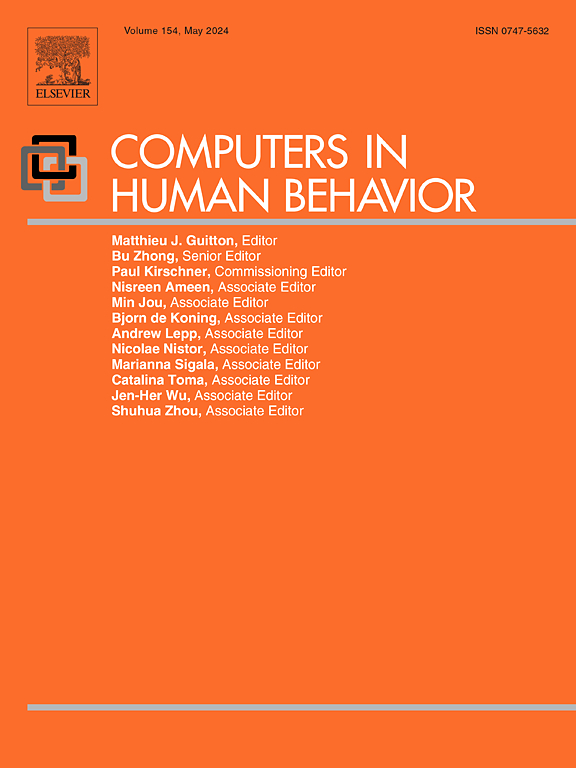Impact of virtual reality and video backgrounds on mental health in digital meditation
IF 8.9
1区 心理学
Q1 PSYCHOLOGY, EXPERIMENTAL
引用次数: 0
Abstract
This study explores how the characteristics of meditation videos, specifically video background (classroom vs. nature) and device type (VR vs. computer), affect mental health outcomes among college students. A total of 202 students participated in an experimental design where mental health was assessed through the Perceived Stress Scale (PSS), Distress Tolerance Scale (DTS), Psychological Well-Being Scale (PWS), and Brief Mood Introspection Scale (BMIS). Covariates, including State-Trait Anger Expression and Loneliness, were controlled. The results revealed that watching meditation videos improved mental health across all measures, regardless of the device used. Nature-based videos significantly enhanced outcomes on DTS, PWS, and BMIS compared to classroom settings, although no significant difference was found for PSS. These findings suggest that while the type of digital device does not alter mental health outcomes, the environmental context of meditation videos plays a crucial role in reducing distress and enhancing psychological well-being. The study contributes to the understanding of media and environmental factors in digital health interventions, with implications for designing mental health resources for young adults.
虚拟现实和视频背景对数字冥想中心理健康的影响
本研究探讨冥想视频的特点,特别是视频背景(教室vs.自然)和设备类型(VR vs.电脑)如何影响大学生的心理健康结果。采用压力感知量表(PSS)、痛苦耐受量表(DTS)、心理健康量表(PWS)和简易情绪自省量表(BMIS)对202名大学生进行心理健康评估。协变量,包括状态-特质愤怒表达和孤独感,被控制。结果显示,无论使用何种设备,观看冥想视频在所有指标上都能改善心理健康。与课堂环境相比,基于自然的视频显着提高了DTS, PWS和bmi的结果,尽管PSS没有发现显着差异。这些发现表明,虽然数字设备的类型不会改变心理健康结果,但冥想视频的环境背景在减少痛苦和增强心理健康方面起着至关重要的作用。该研究有助于理解数字健康干预措施中的媒体和环境因素,对设计年轻人的心理健康资源具有启示意义。
本文章由计算机程序翻译,如有差异,请以英文原文为准。
求助全文
约1分钟内获得全文
求助全文
来源期刊

Computers in Human Behavior
Multiple-
CiteScore
19.10
自引率
4.00%
发文量
381
审稿时长
40 days
期刊介绍:
Computers in Human Behavior is a scholarly journal that explores the psychological aspects of computer use. It covers original theoretical works, research reports, literature reviews, and software and book reviews. The journal examines both the use of computers in psychology, psychiatry, and related fields, and the psychological impact of computer use on individuals, groups, and society. Articles discuss topics such as professional practice, training, research, human development, learning, cognition, personality, and social interactions. It focuses on human interactions with computers, considering the computer as a medium through which human behaviors are shaped and expressed. Professionals interested in the psychological aspects of computer use will find this journal valuable, even with limited knowledge of computers.
 求助内容:
求助内容: 应助结果提醒方式:
应助结果提醒方式:


